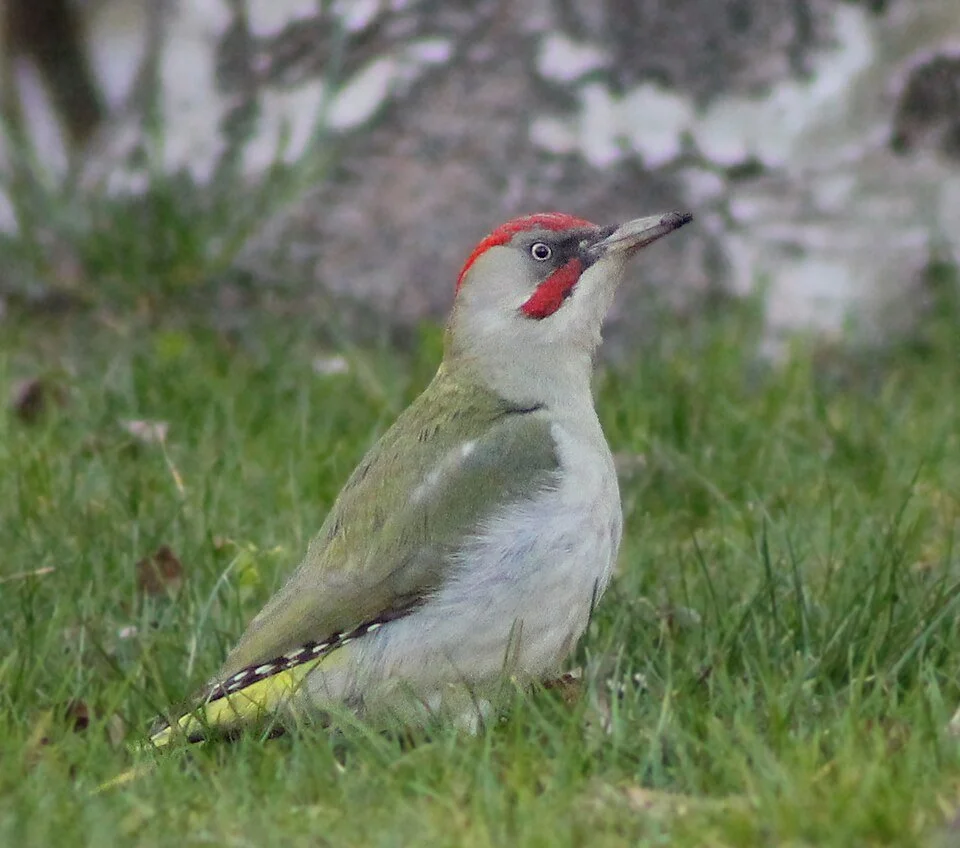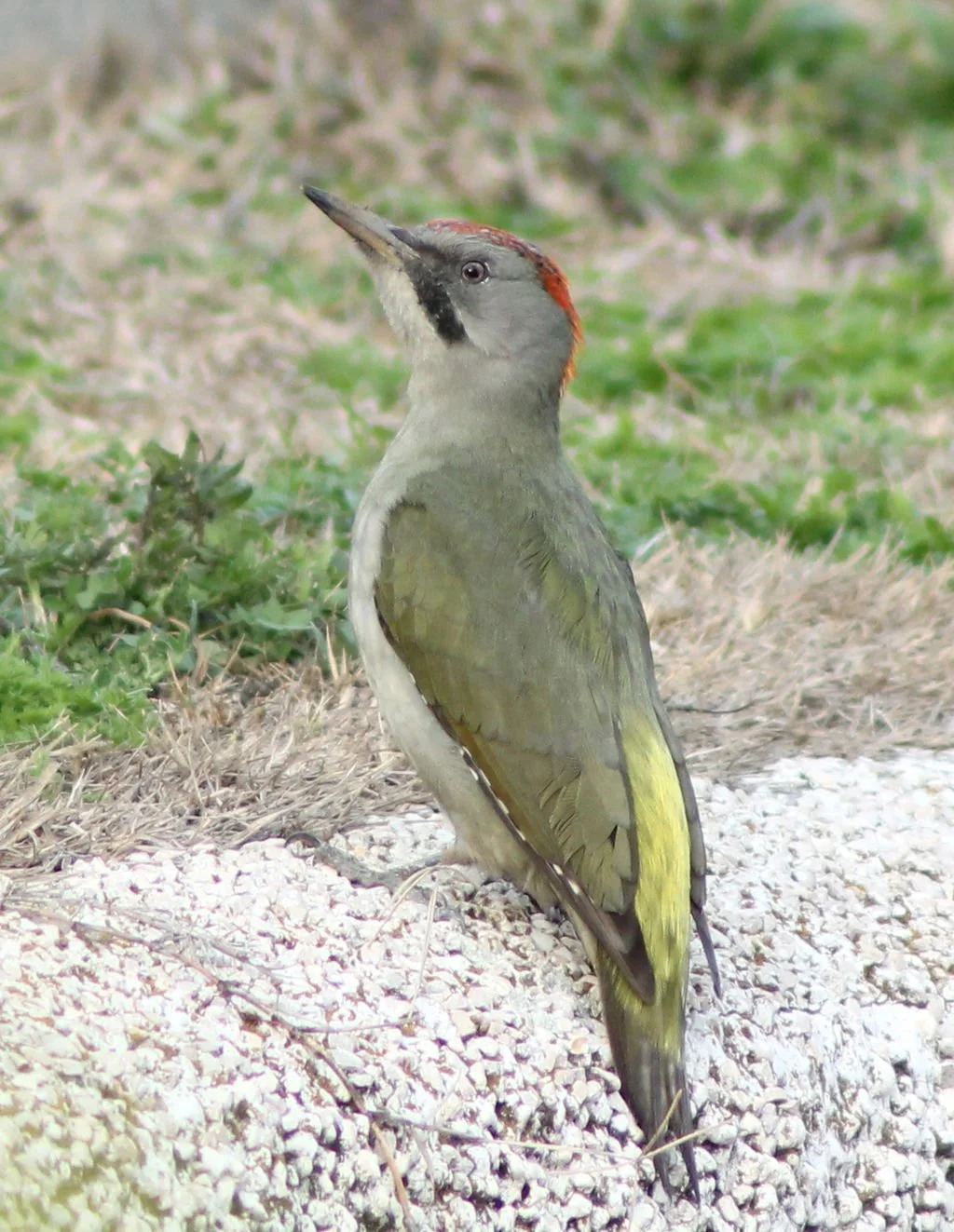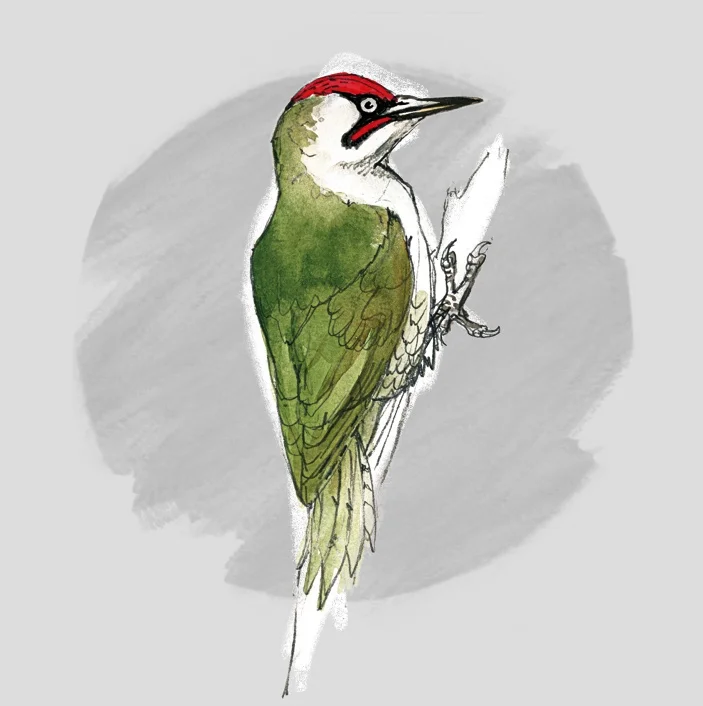IBERIAN GREEN WOODPECKER- (Picus sharpei)
The Iberian Green Woodpecker is now accepted as a separate species to the European Green Woodpecker. But the two are very similar in appearance, and are close geographical neighbours. Indeed, until 2011 Picus sharpei was considered to be a sub-species of Picus viridis, but two separate studies using modern DNA analysis concluded that Picus sharpei was a true species in its own right.
Male Iberian Green Woodpecker (Picus sharpei) By Luis García, CC BY-SA 3.0 es, https://commons.wikimedia.org/w/index.php?curid=24848509
It seems to have diverged diverged from a common ancestor about a million years ago during the climate changes of the Pleistocene period (see Perktas etal 2011) and has adapted to the more arid climate of the Iberian peninsula. The main visible difference between the two is that the Iberian bird lacks the black “mask” of the mainland Europe species replacing it with a pale grey, it has no barring on the belly, slightly less red on the crown, and the malar stripe has black only on the lower edge (see photo).
Range of Picus sharpei from observations posted on e-Bird.
As the name suggests it is limited to the Iberian peninsula where it can be found mainly in wooded areas, orchards and agricultural land, parks and gardens (see map). Since the European species has a range that takes it to the edge of the Iberian, the dividing line being close the Pyrenees mountains although it is recorded north of there (see map, and more details on e-Bird). There are also records of hybridisation between the two species. A genetic study of these hybrids, sampled along the Mediterranean coast, identified an abrupt change in the Languedoc-Roussillon region in the Montpellier area (Pons etal 2019) where the birds became less like P.sharpei and more like P.viridis. This work providing strong justification for its acceptance as a separate species.
The advertising call (song) is quite similar to the European Green Woodpecker but is faster and of a higher pitch - it sounds more “tinny” and not as strong:
Below is a comparison of the two, Iberian first, where the major energy of the call is slightly above 3.0 kHz and in this sample delivered at the rate of 11 notes per second. The second sample is the European Green Woodpecker where the major energy is around 2.2 kHz delivered at 7 notes per second. But both show the same “laughing” quality which can give you pause for thought.
Comparison of the advertising calls of (first) Iberian Green Woodpecker (P.sharpei) and (second) European Green Woodpecker (P.viridis)
NOTE: The recordings here were made from central Portugal, and variations in speed and frequency may well exist from examples recorded elsewhere.
RIGHT: Female Iberian Green Woodpecker (Picus sharpei). (Luis García, CC BY-SA 3.0 ES <https://creativecommons.org/licenses/by-sa/3.0/es/deed.en>, via Wikimedia Commons)





